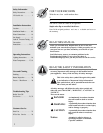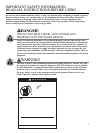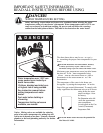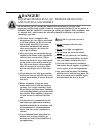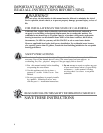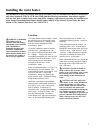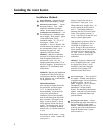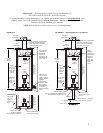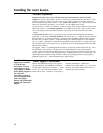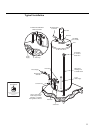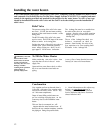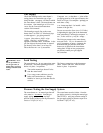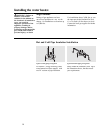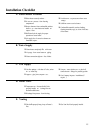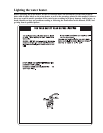
5
LP and natural gas have an odorant added to aid in detecting a gas leak. Some
people may not physically be able to smell or recognize this odorant. If you are unsure or
unfamiliar with the smell of LP or natural gas, ask the gas supplier. Other conditions, such
as “odorant fade”, which causes the odorant to diminish in intensity, can also hide or
camouflage a gas leak.
DANGER!
LIQUEFIED PETROLEUM (LP - PROPANE OR BUTANE)
AND NATURAL GAS MODELS
●●
This water heater is supplied with a
thermostatic gas valve that is convertible
to LP from natural gas. Be sure to read
and carefully follow the Conversion
Instructions included in this manual
when converting the valve from one
type of gas to another.
●●
After conversion, be certain that the gas
supplied to the heater is the type that the
valve has been converted for (LP for
heaters converted to LP use, and natural
gas for heaters converted to natural gas
use). This water heater will not operate
safely if connected to a fuel type other
than the one the gas valve is converted
for.
●●
LP gas must be used with great caution.
It is heavier than air and will collect first
in lower areas making it hard to detect at
nose level.
●●
Before attempting to light the water
heater, make sure to look and smell for
gas leaks. Use a soapy solution to check
all gas fittings and connections. Bubbling
at a connection indicates a leak that must
be corrected. When smelling to detect an
LP leak, be sure to sniff near the floor
also.
●●
Gas detectors are recommended in LP
and natural gas applications and their
installation should be in accordance with
the manufacturer’s recommendations
and/or local laws, rules, regulations or
customs.
●●
It is recommended that more than one
method, such as soapy solution, gas
detectors, be used to detect leaks in LP
gas applications.
DANGER: If a gas leak is present or
suspected:
●●
Do not attempt to find the cause
yourself.
●●
Do not
try to light any appliance.
●●
Do not
touch any electrical switch.
●●
Do not
use any phone in your building.
●●
Leave the house immediately and make
sure your family and pets leave also.
●●
Leave the doors open for ventilation
and contact the gas supplier, a qualified
service agency or the fire department.
●●
Stay away from the house (or building)
until the service call has been made, the
leak is corrected and a qualified agency
has determined the area to be safe.
!




